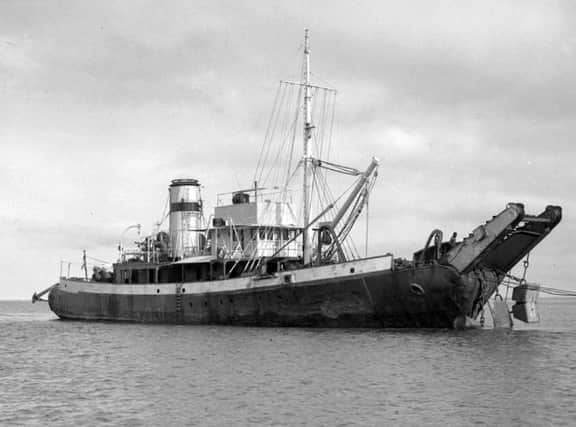ON THE WATERFRONT: Wartime boom defence vessels engined on the Wear


Although busy with repairs, no ship had been launched by Blyth (formerly Cowpen) Dry Docks and Shipbuilding Co Ltd since 1930, until the yard won a string of orders for Royal Navy boom defence vessels as part a construction programme announced by Sir Samuel Hoare, First Lord of the Admiralty, in 1937.
The purpose of these vessels was to tend and operate anti-submarine and torpedo nets or booms surrounding exposed anchorages and across harbour entrances in conjunction mooring vessels. These laid buoys from which the booms or nets were suspended below the water surface.
Advertisement
Hide AdAdvertisement
Hide AdBetween October 21, 1937 and February 8, 1940, 16 boom defence ships were launched at Blyth, all of which were towed to Sunderland for engine installation. These were the 730 tons displacement Bar-class craft HMS Barbarian, HMS Barbette, HMS Barbican, HMS Barbrook, HMS Barcastle, HMS Barnehurst, HMS Barnstone, HMS Barbain and HMS Barcote. Each was 173 feet nine inches in overall length, armed with a three-inch anti-aircraft gun and crewed by 32. The others were the smaller 530-ton Net-class vessels HMS Bayonet, HMS Falconet, HMS Bownet, HMS Burgonet, HMS Dragonet, HMS Signet and HMS Sonnet with an overall length of 159 feet 9 inches, having the same armament and complement as the Bar-class.
All were coal fired and fitted with triple-expansion steam engines, mainly installed by North Eastern Marine Engineering Co Ltd in South Docks. The company was restyled North Eastern Marine Engineering Co (1938) Ltd on becoming part of the Richardsons Westgarth Group that year.
Machinery for Barbrook, Barcastle, Signet, and Sonnet was manufactured and installed at Sunderland by Hebburn-based White’s Marine Engineering Co. Eventually, 74 Bar-class vessels would by built for the Royal Navy by a range of UK yards with 11 Net-class ships also being constructed. Some of the later ones also received engines at Sunderland. The great majority survived the war, with a few remaining in service until the early 1970s.